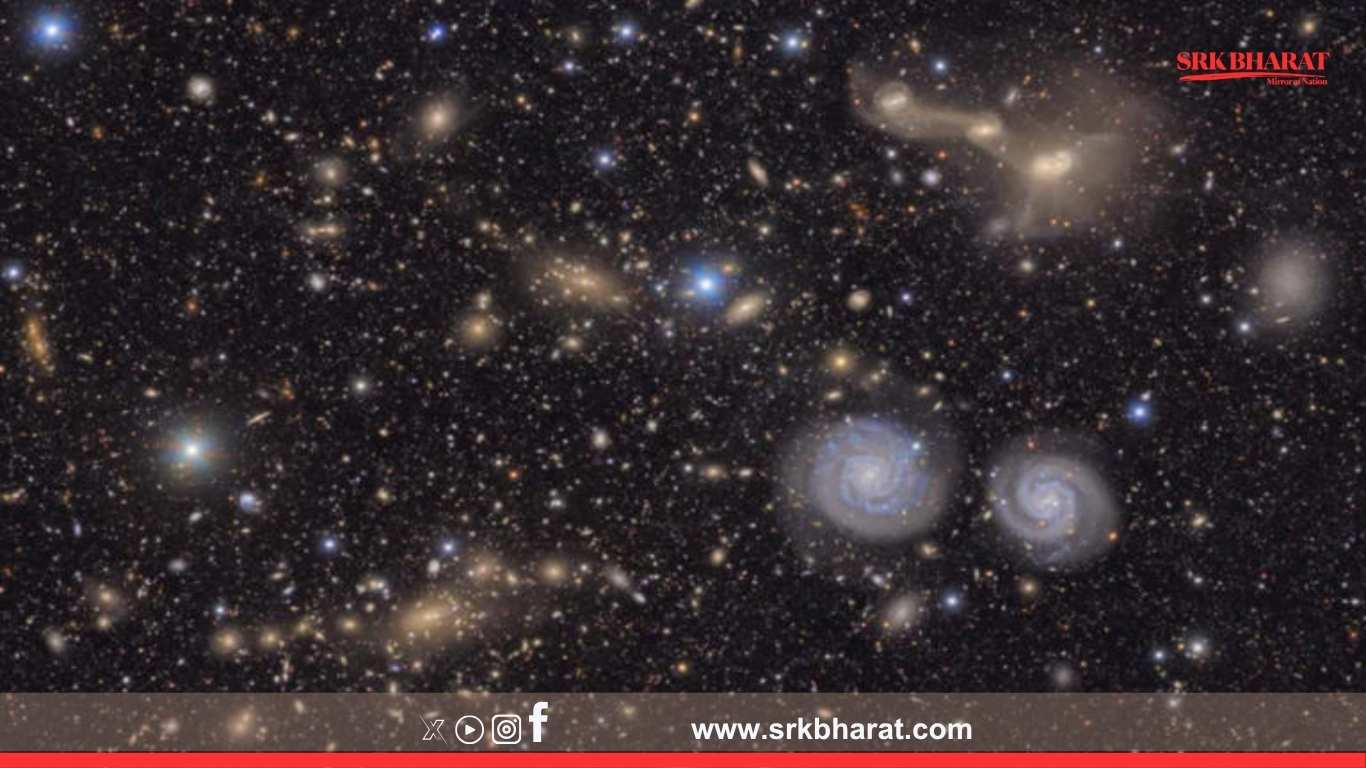The Vera C. Rubin Observatory, home to the world’s largest digital camera, has unveiled its first breathtaking images of the cosmos. With its state-of-the-art 3,200-megapixel camera, this groundbreaking facility, perched atop Cerro Pachón in Chile’s Andes Mountains, is set to transform our understanding of the universe through unprecedented astronomical observations.
Revolutionary Astronomical Breakthrough
The newly released images, compiled from hundreds of exposures taken over just seven hours of observation, reveal intricate details of nebulas, galaxies, and even previously undetected asteroids. One of the most striking photographs captures the vivid hues of the Trifid and Lagoon Nebulae—vast clouds of gas and dust that are key sites of star formation within the Milky Way. These test images showcase not just raw beauty but also the immense potential of advanced digital imaging in astronomical research.
The observatory’s digital camera is a marvel of modern technology. Designed to detect objects with extremely low radar cross-sections, its ability to capture faint light from billions of light years away signifies a leap forward in how we explore the universe. This breakthrough positions the camera as a vital tool for future scientific endeavors, promising to identify millions of galaxies, trace the distribution of dark matter, and offer clues about dark energy.
Cutting-Edge Technology Redefining Celestial Imaging
Funded by the U.S. National Science Foundation and the U.S. Department of Energy, the Rubin Observatory’s $810 million project integrates cutting-edge sensor fusion and image processing technology. By combining up to 678 individual monochrome exposures with multiple filters, astronomers can now reveal details that were once invisible to conventional telescopes. This technological feat not only ensures high resolution but also captures the dynamic range of the cosmos, providing scientists with a deeper understanding of cosmic structures.
The immense data generated—approximately 20 terabytes per night, with an additional catalog database of 15 petabytes over the coming years—demonstrates the observatory’s unparalleled capacity to survey the southern sky. With plans to image 20 billion galaxies over its 10-year Legacy Survey of Space and Time (LSST), the Rubin Observatory is set to become the cornerstone of a new era in space-based discovery.
A New Era in Cosmic Exploration
The release of these initial images marks just the beginning of what promises to be a decade-long mission to unravel the mysteries of the universe. The detailed views provided by the world’s largest digital camera not only offer a feast for the eyes but also serve as critical data points for understanding galaxy formation, cosmic evolution, and the overall structure of the universe.
Astronomers worldwide are eagerly anticipating the scientific breakthroughs that will follow as more images and datasets become available. The observatory’s ability to capture such comprehensive snapshots of the night sky in record time will revolutionize the way we study cosmic phenomena, from dark matter and dark energy to the origins of celestial motion.
Impact on Future Research and Public Engagement
Beyond its scientific significance, the stunning visuals emerging from the Vera C. Rubin Observatory are expected to capture the public’s imagination. These images serve as a powerful reminder of the enduring human quest for knowledge and exploration, inspiring both seasoned scientists and aspiring astronomers alike. With the observatory set to make regular sky surveys every three to four nights, the continuous stream of high-quality cosmic images will not only enhance our technological capabilities but also enrich our cultural and scientific heritage.
🔁 Share this article to stay updated on the latest cosmic discoveries and follow expert insights into the revolutionary capabilities of the world’s largest digital camera at the Vera C. Rubin Observatory.











